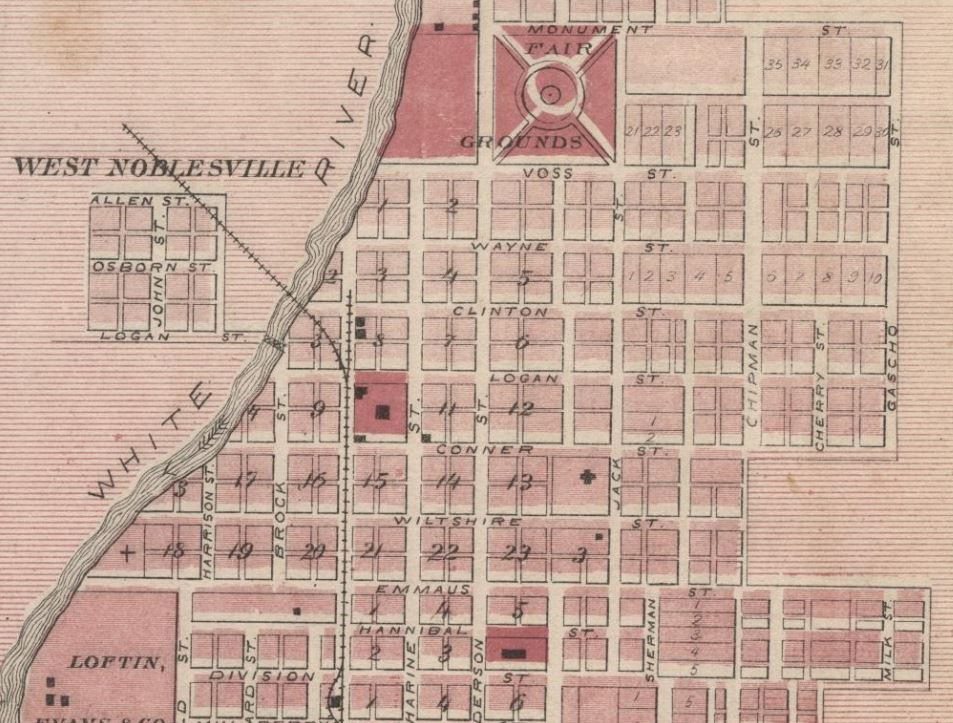 The Fourth of July in 1876
The Fourth of July in 1876
By: David Heighway, Hamilton County Historian
Hamilton County has several local history collectors who spend their spare time doing things like scouring the Internet for Noblesville and county-related items. They often find unique things and it’s great when they share them with the public. Sid Davis recently found a poster for the Fourth of July celebration during the national centennial in 1876. It was a big event and the information in the poster gives an interesting look at the town at the time.
Unfortunately, all of the issues of the local newspaper from that time are missing. A newspaper in Union County reported that Noblesville would celebrate in in grand style with a “barbaque” (sic) at the Fairgrounds. They said, “An ox is to be roasted whole, and a free dinner given to all who attend.” Since the town had a population of 1,435 in 1870 and 2,221 in 1880, this may have been possible. The present-day Noblesville population of 60,000+ would probably require more than one ox.
It looks like a good many people participated in the parade. Henry M. Caylor was the parade marshal and chief organizer. He had probably had a lot of experience with this as the leader of the Civil War veterans’ organization known as the G.A. R. (Grand Army of the Republic).
The order of march was listed as follows:
Thompson’s Cornet Band (which had been organized in 1867 by Jacob Thompson);
The “Thirteen Colonies” (the poster doesn’t say how they were portrayed);
The thirty-seven states represented by ladies in wagons;
Another band;
A military unit;
Representatives from various industries (which perhaps included Josiah Durfee who had built Potter’s bridge in 1870, and the Sheriff’s residence and jail in 1875-76);
The Fire Department (the Hook and Ladder Company had been organized in 1871);
Another band;
Societies (which probably included groups like the Masonic Lodge, the Odd Fellows lodge, and the Hamilton County Medical Society which had been organized in 1873);
Citizens and delegations.
The parade followed a very winding route – it started on Courthouse Square, then went south on Railroad Street (modern 8th St.), east on Division Street, north on Anderson (10th) Street, east on Wiltshire Street (Cherry), north on Jack Street (12th), west on Conner Street, north on Catherine Street (9th), east on Logan Street, and north on Anderson again to the fairgrounds (the site of North Elementary School today). This route would be a modern traffic nightmare, but was no problem on the dirt streets of the Victorian era town.

The program at the fairground was a combination of speakers and musical numbers – including the Star Spangled Banner, even though it was not officially the national anthem yet. Reverend J. S. Craig gave the prayer and local lawyer Joel Stafford read the Declaration of Independence. Possibly the most significant part of the event was the reading of Emancipation Proclamation by Reverend Charles A. Roberts, the minister of the Baptist Church. Roberts was African American and during the decade of the 1870’s, African Americans became prominent in their involvement in the life of the county.
In 1871, a sheriff’s posse had enlisted members from Roberts Settlement. In 1872, the African American community had held a large political rally on the square for the election of Ulysses Grant as president. In 1880, the whole community would turn out to greet Frederick Douglass as he stumped for James Garfield as president, and some local African Americans ran for and were elected to political office. Unfortunately, the national election of 1876 was regarded as the end of Reconstruction and the beginning of a new era of hardship for African Americans. (There is some irony in Rev. Roberts reading the Emancipation Proclamation in that the Roberts family had not been slaves for several generations. There were, however, freed slaves in the audience.)
The Fourth of July event ended with the dinner at the fairgrounds which began at 1:00 PM. There were more music and speeches, as well a reading of a historical sketch of Hamilton County. It may have been a version of the history printed in the 1874 county directory on page 131-146.
